
When writing about the DIY scene in Cork, Ireland, in the year 2023, there’s really only one place to start—only one place everyone will tell you to start—and that’s a record shop on a street in the city center officially called Cornmarket Street, but still known to locals as the Coal Quay for having once been not a street at all, but a channel of the River Lee.
This isn’t uncommon in Cork City center (“Cork City” is used to distinguish it from County Cork), where many of the wider streets were once river channels between a series of marshy islands that were filled in over time to form a single central island (the Irish name for Cork is Corcaigh, translating as “marsh.”) Only two channels currently remain on the north and south sides meaning that, from the sky, Cork looks something like Pittsburgh: a small city organized around a central urban wedge that tapers to a point at one end, ringed by water and crossed with bridges, the rest of it spreading out on either side. But while the channel itself is gone, the name of the quay where ships were loaded up with coal, linen, butter, and other Irish provisions to be sent on to England survives on the lips of Corkonians, thus the Coal Quay is still referred to as such despite not having serviced a coal ship in well over a hundred years.
It is at the end of the Coal Quay, with the 18th century Shandon Tower’s iconic “goldie fish” weathervane (an homage to the city’s salmon industry and, presumably, Jesus) rising above the colorful row of houses just across the Lee, that you will find the cheerful yellow storefront belonging to Plugd Records. When Plugd moved into the space in 2022, owner Jim Horgan liked the existing color and so brightened it up a bit and left it. Though a modest place inside—a small rack of LPs, a few zines, and some scattered cassettes, a table and chairs with normie patrons sipping espresso drinks; more coffee shop than record store vibes, really—Plugd is nothing less than Cork DIY’s spiritual home and Horgan a Cork underground institution.
“Without Jimmy, Cork would be a very different place.”
This is not Plugd’s first location—or its second, third, or even its fourth. Horgan has managed to keep Plugd existing in one form or another through five different locations around Cork since arriving in the city around 20 years ago, riding out Ireland’s economic highs and lows and the inherent instability of the record selling biz by upsizing or downsizing as needed, continually finding a way to provide the city’s music weirdos a safe space to gather, perform, listen, have a cup of tea or, as one musician remembers, get roasted by the sales clerk for buying a Grizzly Bear album.
For many years, Plugd—and its sister cafe, Gulpd—was located in the Triskel Arts Centre, a cultural hub with a performance area where Horgan would book shows, something he continued when Plugd moved to the upstairs event space in the Roundy, a popular bar near to the store’s current location. When Cork went into lockdown, Plugd went entirely online and Horgan delivered records purchased locally on his bicycle. He also put on the odd private gig in his back garden when gigs couldn’t happen otherwise.
Horgan is so beloved in Cork that every person I speak with singles out “Jimmy” for praise, crediting him with everything from influencing their music taste via the records he stocked and bands he’d bring over to play the store, to booking them on their first shows.
“Jimmy was amazing because he was so good at getting people to try out their new shit,” says Elaine Malone, a longtime participant in Cork’s DIY scene who played early shows at the Roundy. “Even if it was young people just coming up, that was a place you could try it. Sometimes it didn’t work, but you [would] just do it again and again. That’s how you learn how to perform.”
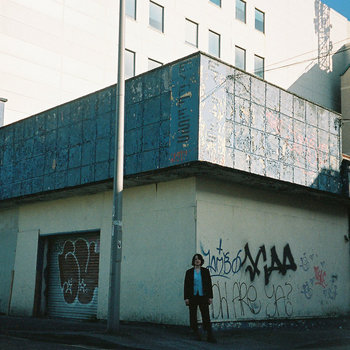



Vinyl LP


Recently, Plugd has started hosting very low-key in-store performances again, with Horgan making a point of booking acts “who wouldn’t too easily get gigs in bars,” he says. “And then, apart from that, I ask musicians that I’m interested in for selfish reasons.” He names a performance by cellist Lori Goldston and local musician Elaine Howley’s record release show as highlights. Tickets are sold online and nearly always sell out because the store’s capacity is an intimate 35.
“[Plugd] has been a real saving grace for a lot of us. I think without Jimmy, Cork would be a very different place. Jimmy doesn’t play music, but he’s responsible for a lot of us being able to feel like we can keep going,” says Dan Walsh, something of a Cork underground institution himself, having knocked around the music scene for two decades in various capacities.
A native Corkonian who’s been making music since he signed up to play trombone in his school band thinking “they were going to teach me the solo for ‘Message to Rudy’ or something, but they were teaching me brass band music,” Walsh found his way to punk rock and eventually to University College Cork (UCC), and finally to the Cork School of Music where he earned a master’s degree.
Walsh’s best-known project is Fixity, an experimental music group that’s both a solo thing and a band, depending on when you ask. “Different people come in and have influence over the music. That’s part of the project, the way the music is written—the kind of welcoming of other voices,” he explains. Walsh also plays saxophone in avant-garde jazz group the Bonk, makes beats with Cathal MacGabhann of the Altered Hours in Senior Infants, and as one of few drummers in town, is often called in to hold down the backbeat for other groups, like Junior Brother, a surrealistic folk act from Kerry led by Rowan Kelly. Despite having been around for so long and knowing basically everyone, the city retains a capacity to surprise him. “Cork is a small town, but it’s not as small as it feels like sometimes,” he says. “I’m always sure that there’s somebody there that’s doing something that could be my favorite thing that I just don’t know. It’s easy to feel like you know everybody, but I get inspired by feeling like I don’t know what’s going on.”
While the city remains a friendly-ish environment for artists for now, Walsh points out that Ireland’s housing crisis means that underground music scene necessities taken for granted elsewhere are currently luxuries in Cork. House shows are out because throwing a rager might get you evicted. Your friend down the road isn’t going to start a tape label to put out music by local bands, because they’re broke. Forget about recording studios or practice spaces—the developers behind all the new glass box developments dotting the city certainly did. And if that weren’t enough, let’s not overlook Ireland’s unsurprisingly byzantine and oppressive nightlife laws making any kind of late evening event an expensive and bureaucratic nightmare, though that appears to be changing at a glacier’s pace.
“There’s people in the room and the music happens.”
Cork doesn’t have a dedicated DIY venue at present, but there are alternative spaces available to those brave enough to make use of them.
Rebel Reads is one, an anarchist bookstore and community center that hosts everything from clothing swaps; workshops covering various DIY activities such as zine-making, and songwriting sessions; to evenings dedicated to speaking Irish language; it was even home to Plugd briefly during the pandemic. Gigs are a possibility at Rebel Reads, thanks to Horgan leaving behind some PA equipment—except nobody seems to know that, which musician and Rebel Reads organizer Declan Synott finds a bit disappointing. “I don’t know if there’s no interest or people don’t understand that it can be a venue,” he says. “It’s like, there’s no one just cheeky enough to go, ‘Hey, can I put on a gig in that place?’”

Synott, originally from Waterford, started coming to Cork in his teens. He recalls how a great gig that his youthful band played with well-known Irish black metal group Altar of Plagues at local bar Fred Zeppelin’s proved to be a catalyst of sorts. “It’s kind of a funny thing,” he says. “When I was 17 filling out my application for university I was like, ‘Dublin or Cork? Well, the Altar of Plague guys are nice and that venue seems cool—I’ll put Cork first and let’s see what happens.’ And now, my entire adult life has been spent here.”
Synott still makes music but says that “any band I’ve ever been in has never been popular, which I’m very proud of,” and describes his place in the scene as more as facilitator than facilitated; he sort of prefers it that way. “DIY is very important to me, obviously. But part of that is not having allowances made for you, it’s being the one who helps make stuff happen,” he says. “But [the Cork scene] is full of these lifers who just feel the same. They’re still putting on a gig here and there. And it’s not a big deal to go, ‘Well, will I just do that with you?’ Even if I’m just here loading amps or if I kick 50 quid in at the end because money didn’t get made. It’s fine. It works. There’s people in the room and the music happens.”
Both Synott and Walsh express concern that younger Irish musicians, used to being squashed by economic circumstance and coming wide-eyed out of a pandemic with no experience of how underground scenes can function on the basis of mutual support, will bring a tit-for-tat attitude into the mix, becoming unwitting soldiers in another sad lurch towards the imposition of a capitalist mindset onto DIY. “My fear is that if everything stays transactional, young bands will see that as part of the scene and people won’t get that it runs on favors and favors exist because of passion—because you want to see it happen,” says Synott.
“Musicians are notoriously resourceful and have to do it. There’s always a way to do it,” says Walsh. “But you might just be getting a little bit more exploited as it’s happening. You have to be ready to do shows for less or bargain a little bit or just make it happen out of pure love, which is 100% what I think that people should be doing.”
One of those pure love things for Walsh is Cork Improvised Music Club, a curated night featuring a rotating cast of musicians playing two sets of completely improvised music, recently re-started after a time without a venue. He’s been doing it for a decade, which Walsh finds “kind of crazy, in the best possible way.”
Elsewhere considered a more academic type of music-making, improvised music is in Cork a form of punk: a way into music accessible to anyone willing to jump onstage and give it a go. “[Improvising] is the fundamental musical act. If somebody doesn’t know how to play an instrument, the first thing they do is improvise. It’s one of the most direct forms of exploring and it’s a great thing that there is a long tradition here of explorative music,” says Walsh, pointing out that UCC professor and founding director of the Triskel Arts Centre Danny McCarthy staged Fluxus-inspired sound art performances in Cork in the 1980s. “For me, you can draw a line from those kinds of influences to what’s happening now.”
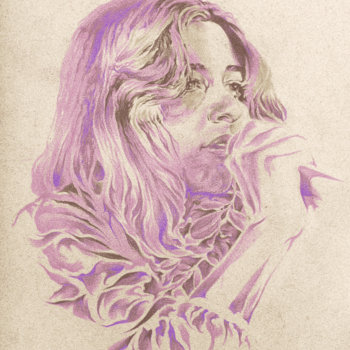
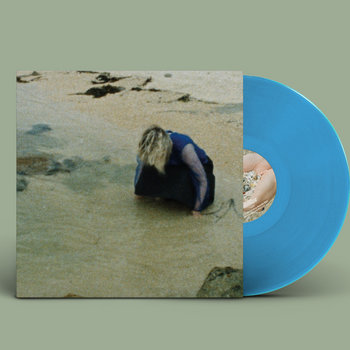




Vinyl LP, Cassette




I attend a Cork Improvised Music Club gig one evening featuring Elaine Howley on vocals, Roslyn Steer on upright bass, and Patrick Cullen on guitar. Attendees gather around with cups of tea purchased at the counter or cans of beer they’ve brought themselves. It’s a sold-out performance so some people sit on the floor. Late afternoon sun pours in through Plugd’s large front window as the trio work their way through two sets of fully improvised music, Howley creating vocal loops by singing lines from a book of poetry by Cork writer Róisín Kelly. In between sets, Horgan herds everyone into the small back garden behind Plugd—as everywhere in the world, a bunch of music people hanging in front of your shop drinking beers and smoking cigarettes is a great way to ensure gigs stop happening.
“The feeling of possibility is strong.”
Howley is probably the Cork musician with the highest profile outside of the city at the moment thanks to last year’s well-received solo debut The Distance Between Heart and Mind. For her, the city’s improvised music scene has been fundamental to her development. “It’s a great leveler,” she says, “People who are really proficient on their instruments are happy to play with people who aren’t. You can just dive in and try things out, and feel your way and learn as you go; you don’t need to have some sort of certificate or some kind of knowledge about how to play an instrument. That’s what’s given me the courage to trust my own ears and play the way that I feel and enjoy.”
“I really enjoy classic songwriting and stuff like that, but at the same time I’ve absorbed a lot of the experimentation and the willingness to make those kinds of blends,” she continues. “I think it’s made some really interesting groups that feel free to try those things and not have to just fit in a sort of a tidy package. I think that is fairly characteristic of Cork musicians.”
A blend of classic and experimental tendencies is all over The Distance Between Heart And Mouth, a Broadcast-esque layering of pop, ambient, and sound art that Howley made at home over the course of a year, recording her ideas to a 4-track. She used vocal loops, synthesizer, guitar, and drum machines to assemble a smudgy, organic sound inspired partially by the experience of listening to the radio. Though primarily a vocalist, “whatever I can get my hands on to make sound is really my thing,” she says.
Even before going solo, Howley was something of a local legend due to her tenure in the Altered Hours, a great psychedelic band she formed with co-vocalist MacGabhann after moving to the city to attend university from Tipperary. Though now the kind of long-running local group whose success is a source of pride and inspiration, when the Altered Hours formed in the late ’00s, “it really felt like we were starting from scratch,” says Howley. “Later we became aware of things that had been happening prior to us starting but for us, it just felt like we were trying to begin from nothing.”

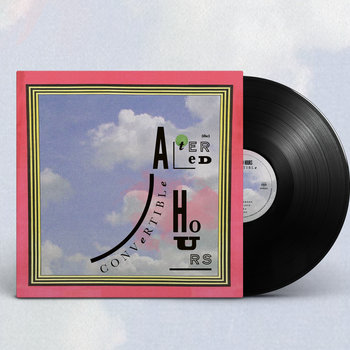
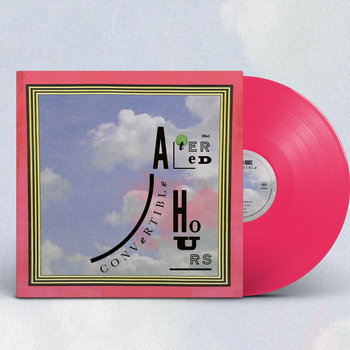
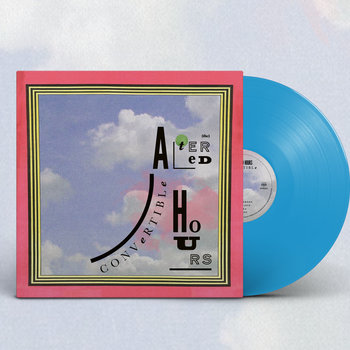

Vinyl LP



Their lack of knowledge included basic things like how to play a show, who to play a show with, and if there even was anyone to play a show with. For their first gig ever, the Altered Hours rented a room in the city center and decorated it with tie-dye and candles. When they made a record in Berlin, they drove from Ireland to Germany because they didn’t know they could fly and rent a backline once they’d gotten there.
By contrast, Howley notes a greater level of know-how among younger musicians. “The feeling of possibility is strong because some of those groups have gone to Eastern Europe or America,” she says. “What’s nice is what I see in Cork is that people go and do that, but then they come back and they play the record store again, they play the venue they’ve always played. I like that spirit.”
“There’s something kind of magical about Cork.”
Aside from their willingness to lean into more cerebral forms of music, another characteristic of Cork artists in 2023 is the number of projects they play in simultaneously, a phenomenon fueled by a post-lockdown sense of possibility.
“I think, for DIY artists, there was a moment during the pandemic where you could opt in or opt out,” says Caoilian Sherlock, a Cork native who has been part of the city’s music scene since he was a teenager lying about his age so his band could play a pub. “There was a real space to say, maybe this isn’t a good future for me. But I think people who opted in are more in than ever. It’s cool to see the people who were in it are now deep in it. People who were in bands are now in like eight bands. They came back with a vengeance and a lot of ideas.”
We can use Sherlock himself as a case study: his oldest group is indie rock band the Shaker Hymn, but he also plays in a garage cover group called the Tan Jackets (with Walsh and MacGabhann), a newish country act, and he self-released a solo record in May, a collection of folk-y indie songs called Teenage Jesus Album. This is in addition to other various music-related job-y jobs he does around town: doing lighting, DJing, running the door, and working with longtime Cork promoter Joe Kelly on booking events around the city, such as DIY music and arts festival Quarter Block Party, newly returned after the pandemic lockdown. “I decided a long time ago that I can see lots of ways that you can make a living from [music], but you have to do all of them at the same time,” Sherlock says. “And anything you can do for Cork is gonna help the local scene.”
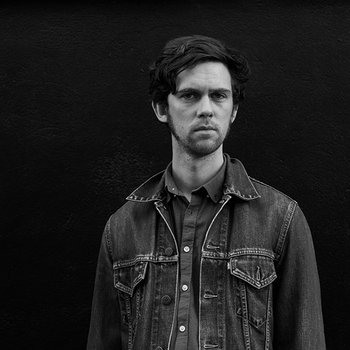
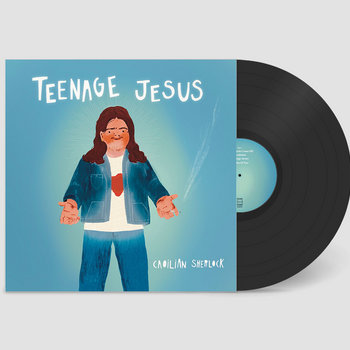

Vinyl LP

“I don’t even like the word ‘scene’ because it seems to almost try and quantify a thing that isn’t quantifiable. There’s so many little parts of it that are moving and constantly changing,” says Elaine Malone. “I could nearly draw you a family tree. Everyone’s in five different bands at once. People are just really excited to be working together. It’s almost like a gigantic group of friends.”
Malone’s own resume is also long and varied. She started making droney experimental music under the name Mantua, and then “had a punk band going for a few years with about maybe 20 different members over the course of it. Every time we played a gig we were barred.” She’s recently joined kosmische/Velvet Underground-ish group pôt-pot on harmonium. Most notably, however, is the release of a solo debut under her own name, a work of reverb washed guitar-based dark psychedelia called Pyrrhic, on Pizza Pizza Records, one of Ireland’s pre-eminent indie labels; she’s recently gone on to support Protomartyr for a few Irish dates. “I did it the wrong way around—the side project should’ve been my own name and then the band should have been something else because I do collaborate quite a lot with the lads,” Malone muses. “I suppose I’m a bit more precious about the songs.”
While Malone is now signed, it took her a decade to get to that point. This is typical in Cork, where commercial ambition has always been tempered by the fact that opportunities are limited. “Cork is not Dublin—A&R people don’t come to our shows, so there’s never really been that sense of opportunity,” Malone says. In Dublin “things happen a lot faster. You’ll see a band come up and then be signed within a couple of months, which is brilliant. That’s never happened here.”
Elle O’Leary-Kelleher of art-punk quintet I Dreamed I Dream puts it more plainly: “I feel in Cork you have space to be shit for a while and get good, whereas I feel like in Dublin it must be intimidating knowing that at your first gig some booker might see one night and write you off forever. There’s no industry in Cork, and it’s great.”
I Dreamed I Dream, who maintain a cheeky, if limited, social media presence, have only recently released an EP, though their live shows have been drawing attention for a while. “They just have this raw energy,” Malone says enthusiastically. “And they know their shit. They’re really fucking intense lovers of music. It could be a really small room with like 20 people in it or it could be a big stadium and they’d be performing the same way. How fucking the magic is that?”


“I just feel very good about Cork right now,” she continues. “I think for years I was kind of disenchanted by the music industry in general. I find it very dark and not pleasant. I think we’ve operated very well without it touching us, in a way. There’s something kind of magical about Cork—and this is a whole thing: Cork people fucking love Cork.”
“There is no Our Band Could Be Your Life for Ireland.”
“The thing you’ll find about Cork, as distinct to other cities in Ireland, is a tremendous civic pride,” says culture journalist Mike McGrath-Bryan.
This will be, to some, the understatement of the year. Corkonians’ love of Cork is a cliché that resonates beyond the island, but one based in a history of oppression and disparagement. While all of Ireland suffered under British colonial rule, Cork was subject to several extreme acts of violence during the Irish Civil War; the city was also hit particularly hard during the brutal economic recession of the 1980s. Taken altogether this has, McGrath-Bryan says, resulted in an infinite devotion to their city and a fierce independent streak.
“Because Cork has been such an outlier on so many levels, you really have to be headstrong and independent to survive. It’s in the psyche of Cork people. We’ve always endured. You’ll see the impact of generations of recession and depression, but you also see that spirit of people out for the night, or out at the gig supporting each other, because where else would you want to be? I suppose every second city has that—[Cork] is actually very comparable to Chicago, maybe.”
During my time here, I will often hear Cork compared to Chicago, which isn’t a terrible way to contextualize the city’s place in Ireland’s musical history. Like Chicago, Cork is peripheral in terms of its relationship to the music industry, but has nevertheless been a nexus for significant developments in music since at least 1878, when it became home of the first municipal music school in Ireland and Great Britain (it still exists to this day.) Also like Chicago, Cork has been responsible for producing several noteworthy figures in Irish popular music, their stories always colored by the proud and distinctive character of the region still known as the “Rebel County” for its noncompliance under British colonial rule. (And for being bitchy about Dublin.)
In the late 1960s, Cork produced Rory Gallagher, a beloved hard rock guitarist apocryphally called the best in the world by none other than Jimi Hendrix. Gallagher famously formed his own group to play original songs rather than continuing to play covers with a showband, the uniquely Irish phenomenon of groups from the 1960s through the late ‘70s playing popular hits of the day to rural audiences that were culturally (and generally) isolated from a swiftly modernizing world. In a country where cover bands were mainstream acts, this was a radical decision. (Fun fact: Cork was also the site of Ireland’s first rock music festival, in part organized by Gallagher who, in a rather Fugazi-ish move, insisted on keeping ticket prices low—£2.50 in the pre-Euro Irish pound—so kids from all over the country could attend.)
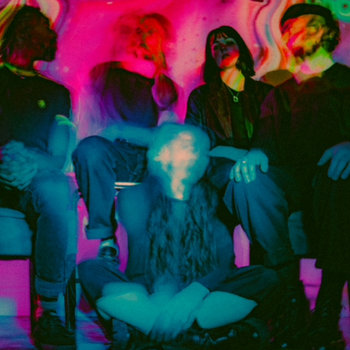

When punk rock arrived in Ireland, it found a receptive audience among a generation of young people repressed by a conservative government in a small country with few resources that was descending into an era of nationalistic violence—a conflict from which music was, sickeningly, not exempt, and one which saw many families leaving Northern Ireland to settle in Cork, including that of future Nun Attax frontman Finbarr Donnelly. It was during these years that the city produced a cohort of post-punk bands whose dissonant ruckus stands out not only for its eccentricity but its genuine obscurity in an over-mined genre. From this scene came Cathal Coughlan of gloomy indie duo Microdisney, and Donnelly, whose tragic story is a sharp contrast to the vibrancy of the anarchic music he made with his trio of bands.
McGrath-Bryan is a tireless cheerleader for the city’s music scene in the pages of The Echo, the local newspaper, and a familiar face at local gigs, often giving new musicians their first write-ups. He’s also a font of knowledge on all eras of Cork’s musical history, which is par for the course in these parts. “There is a pride in music in Cork,” he says. “Multiple generations have their people that they identify with, from Rory Gallagher and Jimmy Crowley on down to the late Finnbar Donnelly or the late Cathal Coughlan of the post-punk bands, to the likes of the Frank and Walters, who are currently enjoying civic treasure status because they were around in the 1990s, or the Sultans of Ping, who just have played their ‘it might be our last gig ever’ show at the Opera House.”
McGrath-Bryan is inclined to take a bit of a punk perspective; our conversation is punctuated with tangents about how the appearance of indie bands Sultans of Ping and the Frank and Walters on Irish children’s television in the 1990s was a “culturing force regarding independent music in Ireland,” and the distinction between the Irish beat groups playing original music that began emerging in the late 1960s thanks to people like Rory Gallagher was “a very embryonic version of what we would understand now as mainstream versus alternative, independent versus industry.”
What becomes clear is that while Cork and Ireland more generally have a long history of underground music scenes, those stories are floating around in various states of documentation and celebration; they’ve yet to be collected and presented in a single narrative. “There is no Our Band Could be Your Life for Ireland,” says McGrath-Bryan, who has a mind to write such a book himself.
“Our Band Could Be Your Life is about a moment in time and disparate scenes within the larger failure of the American dream,” he explains. “The development of modern music [in Ireland] goes hand in hand with people exploring a national consciousness. You have 60 years of post-colonial rebellion weaving together with our old traditions and the arrival of synthesis and the arrival of major labels and the U2 phenomenon and the gold rushes around them and subsequent things that happened. You’ve had independent interest go from necessity to defining choices back to necessity.”
The “U2 phenomenon” of which McGrath-Bryan speaks is what Gerry Smyth in his cultural history of Irish popular music Noisy Island defines as the unavoidable fact that the massive and massively divisive U2 “provides, as far as most people are concerned, the sound of Irish rock—the reality, as it were, with which alternative realities are obliged to contend.”
“Donnelly always used to say, ‘There are a thousand bands in Dublin and they all sound the same!’”
One of these alternative realities would certainly encompass the music of Finbarr Donnelly and his bands Nun Attax, Five Go Down To Sea?, and Beethoven—really more or less one band that morphed into three different forms over the course of Donnelly’s short life. They dropped and picked up members and instruments along the way but maintained an avant-garde erraticism that retains the power to startle and, perhaps most importantly, make you laugh.
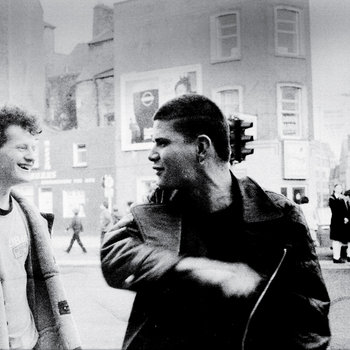
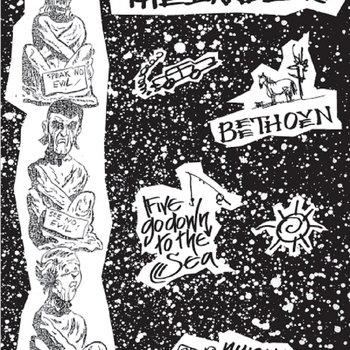
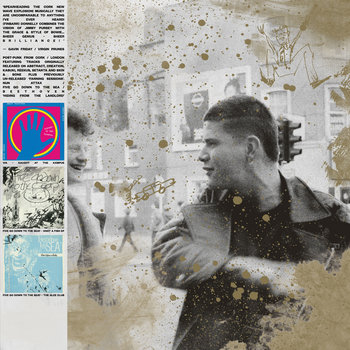



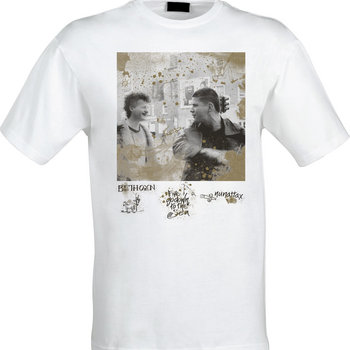

Vinyl LP, Compact Disc (CD)




Donnelly was born in Belfast and moved to Cork at age 12, forming Nun Attax in the late 1970s with guitarist Ricky Dineen, with whom he shared both a working class upbringing and an interest in UFOs; the line-up was rounded out by brothers Phillip and Keith “Smelly” O’Connell on bass and drums respectively. The charismatic Donnelly proved an ideal frontman for Nun Attax, whose existence pioneered the way for Cork bands like Microdisney, who would go on to top the indie charts in the UK and Ireland with their quirky, poetic post-punk.
Nun Attax were closely associated with a venue called the Arcadia Ballroom—the Arc, as it was and still is colloquially referred to, though the venue itself is long gone—and notably a punk night called the Downtown Kampus booked by promoter Elvera Butler, who wrangled a mobile studio from Belfast to come record a night of live performances at the Arc by Nun Attax, Mean Features, Urban Blitz (who became an enjoyable R.E.M.-ish jangle pop band called Cypress, Mine!) and then-brand-new duo Microdisney. The result was released as the six-track Kaught at the Kampus EP on Butler’s own Reekus Records in 1981 (it was reissued on CD in 2011 and on vinyl with extra tracks in 2022), capturing for posterity a crucial snapshot of the city’s music scene at a particularly creative period and proving that Cork bands not only deserved to have their music pressed to vinyl, but that they could have their music pressed to vinyl at all—something otherwise thought to be reserved for bands from places like Dublin or London.
During their time in Cork, Nun Attax/Five Go Down To The Sea? shared the stage with then soon-to-be-huge bands like U2 and UB40, while having little in common with any of them. It wasn’t only how they sounded that set them apart—Donnelly’s theatrical vocals and vaguely menacing, often laugh-out-loud funny lyrics blaring over Dineen’s wiry guitar or, once Nun Attax had evolved into a more avant-garde form with Five Go Down To Sea?, Úna Ní Chanainn’s quivering cello— it was everything. Though undoubtedly punk as fuck, the members of Nun Attax wore regular clothes and had normal haircuts; they listened to the Residents and the Mekons and Beefheart and Zappa. As Mick Lynch of Mean Features and later of punk band Stump put it to author Mark McAvoy in his history of rock music in Cork: “There was no posing, like all the Dublin bands that were coming down and pretending to be Elvis Costello. Donnelly always used to say, ‘There are a thousand bands in Dublin and they all sound the same!’”
Five Go Down To The Sea? garnered enough attention to release a 12-inch on a fledgling Creation Records after the band had moved to London to escape a brutal economic recession at home—a typical story for many young Corkonians of the time, not just musicians. Unable, unwilling, or simply drinking too heavily to convert that early hype into greater success, Five Go Down To The Sea? split up; Donnelly and Dineen regrouped as Beethoven and released one single, which included a bonkers, nearly unpleasantly so, cover of “Daytripper,” before Donnelly drowned in Hyde Park’s Serpentine Pond in June of 1988, putting an end to all future musical endeavors from the magnetic vocalist. He was only 27-years-old at the time of his death.
“That’s cool; I’ve never heard anyone singing post-punk with my accent.”
In 2020, Dublin’s All City Records released Hiding From the Landlord, a compilation of Donnelly and Dineen’s musical oeuvre on their imprint Allchival.
This was the first time the members of post-punk trio Pretty Happy—who all grew up on the north side of Cork, same as the members of Nun Attax—had listened to the music, and it was nothing less than revelatory. “It’s like seeing your street on Google Maps,” says Abbey Blake, who plays guitar and sings. “All the things you associate with a different culture that feel almost unattainable are just ruined with this band.”
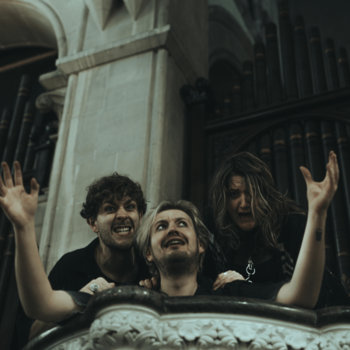
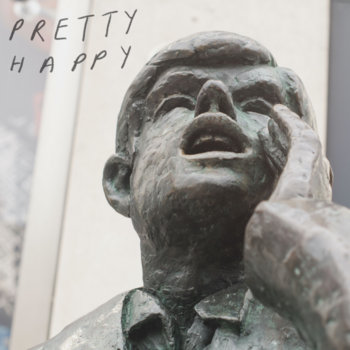

Vinyl LP

“For our generation, when you hit about 16, you’re like, ‘[Ireland’s] a shit country, it’s just farms and it’s small—I need to get to America.’ You idolize everything American,” says Araan Blake, who plays bass and sings. “That’s an escape from Ireland, in a way, to play punk music and play these American styles of music. But then when you start singing in your own accent and writing stuff with Irish themes and with Cork themes, it’s like ‘holy shit.’ Nun Attax singing about ‘There’s A Fish On Top Of Shandon (Swears He’s Elvis)’—that’s a direct reference to Shandon tower. That’s cool; I’ve never heard anyone singing post-punk with my accent.”
The accent is a sticking point for Corkonians as their sing-song-y cadence has historically been and still is subject to mockery and considered a mark of unsophistication; which renders a song like Five Go Down to the Sea?’s “Knocknaheeny Shuffle”—little more than a skeleton of a tune built around a chorus-less riffing on a regional subgenre of the Cork accent—not only genuinely funny, but rather brilliantly subversive in the way it takes the very things used to belittle Corkonians—how they speak, the places they live—and fashions them into very sophisticated, unassailably cool music.
“You get a surge of pride and possibility—like, ‘These guys did it, we can do something weird and we can use our culture, which maybe we thought was a bad thing when we were younger,’” says drummer Andy Killian, who, like the Blakes grew up listening to standard American indie fare like the Pixies and the Strokes.
“I think the Cork attitude in music will always come out that way. It’s going to come out in a Cork accent, you’re going to be pissed off about Dublin, and it’s going to be funny,” says Abbey. “That is always going to exist in Cork, I truly believe that. It’s always going to be weird, because anyone here will be disgraced if they try to sound like a band from Dublin or anywhere else.”
The rivalry between Dublin and Cork, the two biggest cities in the Republic of Ireland, has a long history, with the defiant Corkonians considering themselves the “real capital” for many reasons—one of them being their opposition to the Irish-Anglo Treaty, but also because they enjoy pissing off Dubliners. That attitude inevitably trickles down into the underground, the eternal disagreement between who is punk and who is not punk a lower echo of an existing social hierarchy. “I’m thinking of the way Ricky [Dineen] described bands wearing leather pants and all this kind of shit, playing shows, and it’s like, ‘Alright, relax for a second,’” says Killian. “‘No one’s gonna hear you in London, no one’s gonna hear you in America. We’re the only people that are witnessing this, so stop.’”
“When you see people like that, you’re like ‘Holy shit, this is an economic venture,’” says Araan. And you’re like, ‘Maybe if I stopped going this weird way, I might be able to make a living off of this.’ But no one ever thought we could make a living off [of music]—no one in Cork does because there’s no Cork bands that ever made a living off it, which is very funny. And if you’re not going to make money off of it, why not do some weird shit? The arts are really kind of lovely anyway. This is such a lovely thing! Isn’t that enough for you? You don’t need to make a million dollars—and you won’t!”
But while anti-Dublin sentiment at least partially fueled the work of bands like Nun Attax, these days relations between the two cities’s scenes are much friendlier, something Malone credits to a strong network of mutual support amongst underground artists that stretches across Ireland. “I think in Dublin there’s been a bit of hostility towards outside things or it’s like, ‘We have everything here, why do we need to look outside?’ But there’s been a big change and now there’s people from Dublin down all the time to hang out and come to shows,” she says. “There’s been more of an exchange recently and it’s all connected to the DIY scene, and I’m really happy because that wasn’t really there before.”
Of all the local artists, Pretty Happy lean hardest into the Cork aesthetic. Their latest EP is called Echo Boy after the city’s famed newspaper boys, and their newest merch design is a play on the logo for Beamish, Cork’s local stout. (Better than Guinness, it must be said.) Hiding From the Landlord also inspired the trio to take an ethnomusicological approach to their city’s history and make a documentary entitled Leeside Creatures (2022) in which they interviewed old Cork punks like Dineen about their misspent-ish youths, preserving for posterity a crucial piece of Ireland’s punk puzzle. “We just put the question to everyone like, ‘Does the city have an impact? Is there something in the water? What is it that makes bands from Cork sound like this?’” says Abby. (Sadly, Cathal Coughlan of Microdisney passed away before the band could speak with him.)
It is perhaps fitting that it is Pretty Happy who, after buying me roughly 80 pints of Beamish, troop me down to where legendary bar and club Sir Henry’s used to be located in Cork’s city center. Founded in 1978, Sir Henry’s hosted punk and hard rock bands in its first few decades of existence— Nirvana played there with Sonic Youth back in 1991, and a photo of Kurt Cobain was taken outside the venue—before becoming a hotspot for electronic music in the 1990s (allegedly, I am told by an Irish music person old enough to know, fueled by all the MDMA that was smuggled into Ireland through the Port of Cork.) Sir Henry’s shut down in 2003 and Cork’s never quite gotten over the loss—there’s now a car park where it used to be located and, according to the Blakes, the worst bar in Cork.
But there’s something else they want to show me: the remains of a mural on Grand Parade—one of those wide streets that used to be a channel—put up in 2020 for the reissue of Kaught at the Kampus featuring a black and white photo of the young Nun Attax. It is mostly degraded now, with only the outline of Donnelly’s still head visible. His face has been wiped blank, but a good citizen has seen fit to redraw his features, sort of: two black button eyes and a line for a mouth curved up in a happy smile.
“There’s world class stuff happening here.”
Currently in the process of writing their next record, Pretty Happy have recently dipped into promoting events under the moniker Seanie Buttons Presents, a regular night launched in May they book and run in collaboration with their manager, Leagues O’Toole, a longtime Irish music head who currently promotes indie shows under the name Foggy Notions.
Seanie Buttons shows take place at the Green Room, an 80 capacity venue with a bar and a tiny floor-level stage in the back of the much larger, much grander Cork Opera House. Attendees enter through the rear of the building, so it feels a bit like going to a warehouse gig, with everyone standing in the alley smoking cigarettes between sets. Elaine Malone, who has played Seanie Buttons shows both as Mantua and with her solo band, thinks of the Green Room as something between a DIY venue and a proper venue, “prestige and the underground meeting in the middle.”
In a bit of a throwback to Elvera Butler’s Downtown Kampus Nights, Pretty Happy make an effort to pair touring bands with local groups, older bands with newer ones: Bar Italia and Mount Eerie have played Seanie Buttons shows; so have young locals Mossy and Pebbledash and, of course, Pretty Happy themselves. “It’s not just Cork bands, or it’s not just a certain age group of people,” says Malone. “You’ll see a band who are in their 50s that have been playing for ages or you can see the 18-year-olds. It’s really democratic and a good gender balance.”


The arrival of Seanie Buttons is a big deal for Cork, which has struggled to maintain venues suitable for small to mid-level indie bands of any kind for decades. The biggest challenge at the moment, says Caollin Sherlock, is the lack of a venue that can accommodate bands too large for Seanie Buttons or Plugd, but which wouldn’t look soul-crushingly empty if only 100 people turned up. Before the pandemic, Sherlock and Joe Kelly were working together at the Kino, a 200-capacity venue that had potential to be what the city needed, but Covid-19 restrictions put an end to all that. Now Sherlock and Kelly book shows at various venues under the charming name “The Good Room,” so-called because “in Ireland, you have a sitting room and then you have a ‘good room’ for guests,” he explains. “It’s meant to be like a traveling thing—they can pop up anywhere.”
Sherlock points out that having a space for music people of all kinds to congregate is integral to the health of any music scene, but especially for Cork. “That’s where people come up with funny, silly ideas; that’s how people form bands, on a great night out—that’s totally dead. Bigger cities have different areas where people live, but Cork just has the city center,” he says. “If it doesn’t have a space for people to share concerts or events, it starts to feel a little dislocated. There’s world class stuff happening here—it’s just a bit of a mindfuck trying to figure out how to get that out into the world, and it starts in the physical sense. If you can’t even figure out how to play the shows, that’s a really difficult place to begin.”
“Let’s get out of nostalgia mode and let’s do it now.”
“Cork used to be really good,” says Ollie McMorrow, a producer who makes music under the name Doubt. “The city has always had a really strong DIY scene, but the licensing change hit the city really, really hard. Now there’s like one nightclub and apart from that, it’s late bars that play run-of-the-mill chart music. And that’s fine, you need space for that, too. But there’s not been much space for anything more underground or left-of-center.”
Creating room for left-of-center ideas is the aim of multi-disciplinary collective DOSE, founded by McMorrow, Roy Stam, Michelle Delea, Nevan O’Keeffe, and Chris Power; friends from Cork seeking creative ways to showcase music and art in an social climate that’s been squeezing the underground since they were children growing up on the backend of the city’s musical heyday. Rather than continually kicking against the licensing laws that have led to disappointments in the past—Stam says they’ve booked events only to have the venue pull out when the date approached—DOSE dispenses with the idea that a pub gig or a festival is the only way to have a “musical” event altogether, taking inspiration from the city of Cork itself and friends and peers from all over the island.
Over a three-day weekend in June, DOSE put on the DOSE Weekender, a series of events planned in collaboration with the Dublin arts collective the Ecliptic Newsstand, a cultural newsletter turned mobile fanzine newsstand, and digital radio station and media platform Dublin Digital Radio. The schedule booklet produced for the event described the weekend as “a chance to bring people together and enjoy some music with you all, in both conventional and alternative spaces near the banks of the Lee.” These included a pub gig headlined by Ushmush, an artist from Ennis in County Clare, who makes reggaetón music with lyrics in Irish; “A Walk Down the Lee with The Big Speaker,” an afternoon group walk along the River Lee soundtracked by noise and ambient music “not necessarily about the river Lee, but drawing from [the artist’s] own ideas of Cork,” says Stam; two opportunities to “hang out” with the Ecliptic Newsstand in places around Cork, including Rebel Reads; an afternoon of electronic music at a local bar; and a football match on Monday afternoon for everyone not too hungover to participate.
The Ecliptic Newsstand has been greatly inspirational to DOSE—particularly to Stam, who moved back to Cork two years ago and says he was disillusioned by the nightlife scene. “I got a lot of hope from going to Dublin and meeting the Ecliptic gang because they started doing things like going mobile and doing things out in the open rather than relying on clubs or pubs. They’re not restricted to ‘This is what a party should be’ or ‘This is what a weekend festival should be.’ You could go for a walk, or you could go for a swim, you could play football, and still have music involved in some way, shape, or form. It doesn’t have to be four-on-the-floor all weekend.”
McMorrow, Stam, and Delea are proud that only the first evening’s event was ticketed; everything else was free to attend. Accessibility is a priority for them. “It always comes back to the person who’s coming, and giving them an experience,” says Delea. “The first thing is that someone feels comfortable, they got there okay, and they didn’t pay too much. Then the next level is they have a good time, and the next level is they have a memorable time.”
Delea expresses some annoyance at how Cork’s tendency towards self-mythologizing often manifests as do-nothingness, especially when it comes to the lionization of long-gone venues like Sir Henry’s at the expense of people daring to think there could be something new. “It was kind of before our time, but it was so impactful that you almost hear about it every week,” she says, a touch of exasperation in her voice. “But it’s like, okay, let’s get out of the nostalgia mode and let’s do it now. We know it’s possible. That’s why this weekend is so nice to finish.”
“There’s no other people that show up and show out like Irish people.”
On one of my last evenings in Cork, I am invited by McGrath-Bryan to meet him at a local pub to hear some traditional music; as I walk up, I receive a message informing me he has given me the wrong information—it is actually the pub next door to the pub he told me to meet him where I am actually to meet him. (To be fair, both pubs are noted as outposts for traditional music). The musicians have yet to arrive when I do; Rory Gallagher is on the stereo.
Traditional music—trad, as it’s called—is one strain of Irish music I’ve yet to touch on, but is as important to Ireland as any music imported from elsewhere. The crystallization of trad as the true “sound” of Irish culture and the development of Irish pop as a milestone for Ireland as a modern country have always gone hand-in-hand, audible in the innovations on the form by experimental folk groups such as Planxty, or prog bands like Horslips. Those alterations angered people who believed that fiddling with acoustic-based trad would pervert it in some way, setting up a problematic dichotomy of what is “authentically” Irish and what is not—a bad road to go down in every sense. And yet it is such a globally accepted narrative that before I came to Cork, it seemed perhaps it was traditional music’s stranglehold on Irish culture that kept more modern forms of music from getting a toehold. But the more I speak to people, the more I understand how trad and pop are two sides of the same coin, a sonic representation of the tension between old and new; traditional and modern; rural and urban, that is present everywhere in Ireland.
While we’re waiting for the music to start, McGrath-Bryan asks me if there is anything in particular about Cork that is different from other DIY scenes I’ve covered. It’s a good question. The first answer is no because all music scenes are more or less the same and populated by the same sorts of people: fringe types who like being on the fringe, who’d rather change each other’s lives than change the world, all of them absolutely in love with music. The bands, the fans, the old guy at the party tonight: all of it exactly the same. This is what makes being part of DIY so meaningful; once you are a star in that firmament, it doesn’t matter where you go—you are always among friends and you are always at home.
But that also means that, if you kick around music long enough, you tend to tap out on experiences that feel different—and there is something that feels distinctly different in Cork, a low hum buzzing just below the surface that’s hard to articulate because it’s so markedly unlike how Americans engage with our own DIY scenes, which now suddenly seems so arrogant, so stereotypically American, how blithely we slice up the country’s scenes and sounds—this is what Seattle sounds like, this is Chicago, this is L.A.—because ultimately it doesn’t really matter how the puzzle is arranged: all the pieces belong to us, the great cultural chimera of the world.
What’s happening in Cork—and really, it seems, Ireland more generally—goes beyond the mundanities of cities and bands into the nebulous realm of self-determination, because there is a sense that, for these artists, their Irishness is of great importance to the music they make. Not in a weird nationalistic way, where musicians feel compelled to be good artistic citizens presenting the motherland in the best possible light (that is what Eurovision, where Ireland has historically done quite well, is for). It’s more a response to the very real fact that to be Irish is to have every aspect of your identity politicized, whether you like it or not. Why, then, should the music you make be any different?
It isn’t, except in the different ways Irish musicians choose to express that essential part of themselves, which can be quite different to the commonly-held conception of what “Irish music” is or should be—a knotty ideological tool often used to deploy a conservative agenda more easily exploitable and exportable from a small country that to this day labors under an inferiority complex due to the circumstances of its sad history. “Ireland has this sense of needing to prove itself to elsewhere, so there’s always the element of needing to have a postcard from Ireland that is very digestible and you can understand, like ‘This is Ireland and this is where we’re at,’” says Walsh. “For someone like me, the way I work that’s always gonna be something for me to react to. It’s not necessarily going to be my place in the culture because it would feel like a lie. So I have to stick to what I do and use those reactions as a positive.”
There are others, he points out, that work differently. “There’s a lot going on at the moment around Irish folk music with people trying to bridge the gaps between worlds that are valid to them. There’s a band called Trá Pháidín who are really on the case. The bandleader, Peadar-Tom Mercier, is working incredibly hard, doing whatever he needs to do to make it happen, writing new music and recording it. There’s elements of post-rock and improvised music, but it’s all loosely based on the framework of Irish melody.”

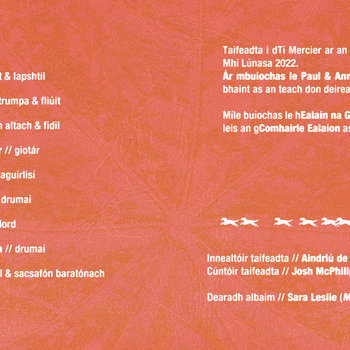
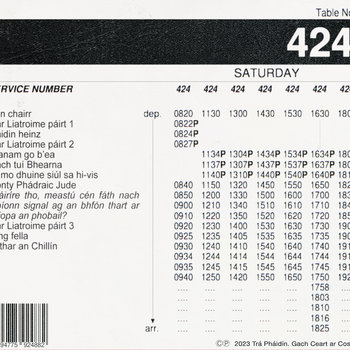
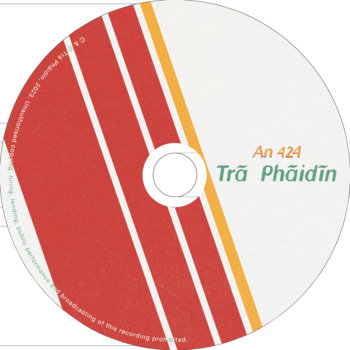


Compact Disc (CD)




“A lot of bands here you wouldn’t get anywhere else in the world, and it’s all because they’re in Ireland,” says Abbey Blake. “Our culture and our history: It’s a very important thing, it’s a beautiful thing. I honestly think we make some of the most unique music in the world. And I do think it’s because of our history and just how our people are.”
Maybe that music comes out like Nun Attax, avant-garde and goofball; or their progeny in Pretty Happy, waving the flag for the legacy of Corkonian post-punk; Elaine Malone’s subtle psychedelia; Dan Walsh’s experimental jazz; or perhaps it’s the great Lankum, the Dublin group whom everyone’s crazy about for their combination of traditional music and drone, a reflection of the modern Irish experience not unlinked to the past, but not shackled by it either—and signed to the great Rough Trade, no less (“Rough Trad,” as Elaine Malone jokes after a few pints). Then there are facilitators like Synott and Horgan; Sherlock taking on ten different jobs at once because it helps the scene; DOSE’s expansion of what a musical event can be in a city with a long history of doing the same in a conservative country trying its best to remain boring. All of these people are, in their own way, forging the alternative realities with which reality is obliged to contend, so that it is not some hoary definition of what “Irish music” is that determines what it means to be an Irish musician, but rather it is the music itself that deepens what it means to be Irish.
“There’s no other people that show up and show out like Irish people,” says McMorrow. “Irish people are very proud, but we put ourselves down a lot. So it’s very important to do things in Ireland. We have people that come from all over the country that come down for things because they want to be here, but also because they recognize that it’s an important thing.”
Elaine Howley shares similar sentiments: “There’s definitely a sweet spot right now where it’s like, ‘Hey, you know what, it’s a small island and we can actually get around it and the quality is so good.’ It’s not hard to enjoy it. It’s class.”
When I return to New York and unpack my suitcase, I find a collaged flier DOSE created by artist Megan Conery for the Weekender sandwiched in among the pile of zines from the Ecliptic Newsstand, the copy of The Communist Manifesto in Irish that Synnott gifted me at Rebel Reads. On the front of is a map of Ireland titled “Through Routes from Cork,” black lines for roads leading up from Cork to Dublin, Limerick, Galway, and so many other places, each one a twinkly star in a great constellation lighting a way through this island universe, the only broken line marking the border with Northern Ireland. To one side, where the map legend would conventionally be, is a blank box around a series of arrows pointing upwards, and between them printed three words, rising from south to north: Past. Present. Future.







